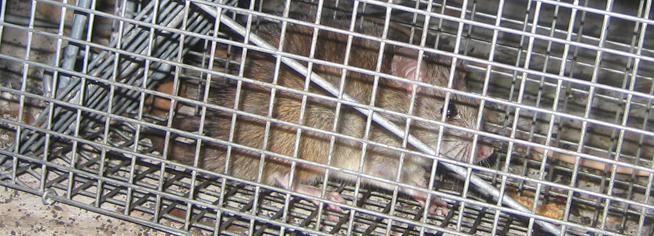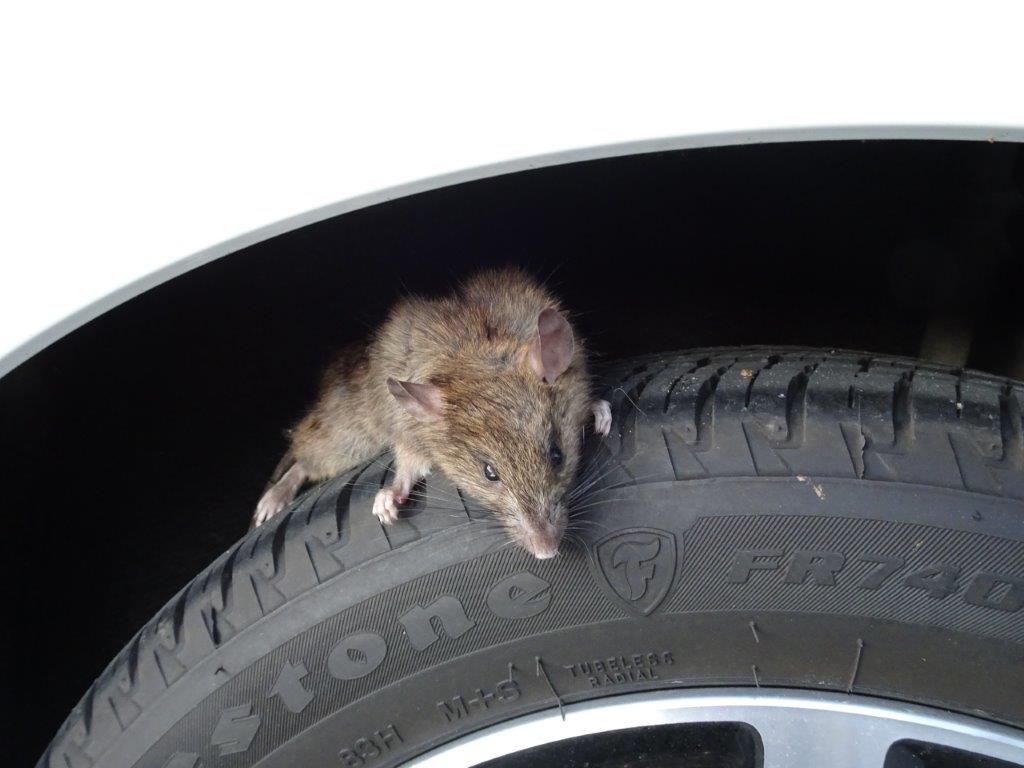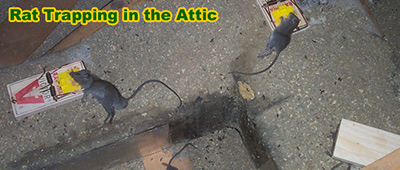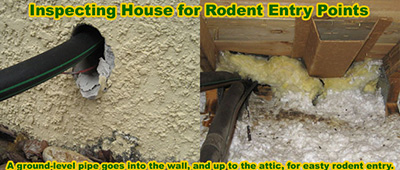Need professional rat help? What does it cost? Go to the home page
There are plenty of trap options when it comes to getting rid of a rat infestation, and each of them will come with their fair share of pros and cons. Cage traps, for example, are a great way to humanely deal with your rat problem, but there are some disadvantages you will definitely need to bear in mind before you settle on them as your rat-removal method of choice.
With cage traps, you won't have a dead rat to deal with, or the disease threat that often accompanies that. With live rats, you will still need to find the urine and feces and clean it up, as well as the nesting and needing material the rat will have made itself comfortable in. You will also not have the dead rat on your conscious, if that's something you'd rather not deal with. Live cage traps, over lethal snap traps, are generally better for your home if you have kids or other animals wandering around. The last thing you will want is your cat to catch its paw in the rat trap, or worse than that, one of your kids!
You will need to check both live cage traps, and lethal snap traps, regularly to ensure that you aren't leaving an animal, live or dead, lying around. A live rat won't last long in a cage trap, and with the distress and panic rats often feel when confined in a small space, they'll often injure themselves in a desperate bid to break free. Both live and dead rats will release pheromones that attract other rats also. In short, this isn't something you will want lying around your house for very long.
Now that we have looked at the positives for using live cage traps, however, it's now time to look at the negatives. When you catch a live rat using a cage trap, you'll need to relocate it. If you haven't sealed all the holes around your home yet, the rat will be able to get back in. On top of that, relocated animals, including rats, very rarely make it when left to their own devices. In a new area / territory, these relocated rats are left with no way to find their family, no knowledge or food, water and shelter, and will often die, either of starvation, or becoming prey to bigger predators.
We know that you will always want to take the most humane possible approach to wild animal removal, but with rats, the most humane option isn't always the nicest one. The best traps to use when you're trying to get rid of rats are lethal snap-traps. These are designed to cull the animal in one snap, no harm caused to anyone involved, and are often rather cheap to pick up, making them suitably disposable. Although you will not be relocating the animal, you are still dealing with the problem humanely. As long as you buy the right traps, set them correctly, and make sure they are placed in the right position, with the right bait, the rat will be killed on impact, feeling no pain. Rats are vermin, and not only do they become someone else's problem once you release them back into the wild (or your own again), they will also reproduce super quickly. This is not a problem you want to return, and snap traps are the best way to resolve the infestation.
Go back to the Rats in the Attic home page.
Read more articles about rats:
What are the types of rat snap traps?
How to Make a Rat Trap
Is it legal for me to trap a rat?
Humane rat traps

When purchasing traps to set, people are faced with a few options to either purchase snap-traps, glue traps, or catch and release cage traps. For some people, the traditional snap-trap is the go-to; it is a simple device that has had the same design for nearly 200 years. Other people are just not happy to use kill traps and look for a more “humane” option. This is where cage traps or other “catch and release” become appealing to members of the public that are not comfortable killing another creature.
The catch and release trap
Typically, these consist of a cage or a tube that is constructed with the main chamber that will hold the rodent and a trap door that will close behind the rodent after it enters the trap. These style of traps are fantastic at trapping either single or multiple rats, depending on the model, and holding them captive in a cage or chamber which they cannot escape from. The ability to have a secure barrier between the rat and the user is a very attractive feature for many who want to consider this a more humane option, as the user can ensure that the route into their house is blocked and then carry the trap away from the home before releasing the trapped rat; all without having to engage in risky behavior and minimizing contact, lowering the chance of a nasty bite or coming into contact with the rodent at all.
It is this humane catch and release treatment that so many users are attracted to when thinking of the welfare of the rat trapped within. But is this really true?
The truth of released rats
When catching and releasing a trapped rat, the “humane” option has been shown to be not always the case. You might have trapped a single rat, however, very rarely is there such a thing as a lone rat. The rat that you believe that you have kindly moved, could have been taken away from a nest of babies, who will certainly die within days, or you may have even taken the rat away from its habitat and family. The rat will most certainly die after you have released it either way. Rats have evolved to live alongside humans, remaining unseen as this has become vital to their survival. Their meals are based on what humans discard, eating from our garbage cans, and generally scavenging whatever scraps of food we leave behind.
They live hidden in our attics, basements, or crawl spaces. Sometimes, they live in storage units or garages, perhaps living in a shelter under your garden shed. By living in this way, hidden from sight, rats have maintained a steady supply of food and shelter and remain hidden from their most common predators. Predators that can see a newly released rat, such as, hawks, eagles, owls, etc., as well as common animals such as dogs, cats, raccoons, coyotes, etc. Rats that live around your home have learned where these predators go and how to avoid them. Moving the rat into a completely new environment will mean that the rat has a much lower chance of surviving as they will not know where these predators are and will likely learn this lesson the hard way.








